Russian Knapweed
Information
Acroptilon repens - Asteraceae Family - Creeping perennial
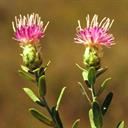
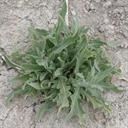
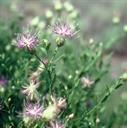
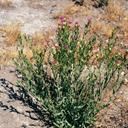
Identification
- Flowers: Pink or purple colored. Bracts have papery tips.
- Seeds: Seeds can remain viable up to eight years. Seeds below depths of one and a half inches will not germinate until the soil is disturbed.
- Leaves: Generally deeply lobed and sparse along the stem.
- Roots: Russian knapweed roots are easily recognizable by their black or dark brown color and small buds that develop into adventitious shoots, enabling the plant to spread rapidly and form dense colonies.
- Flowering Time: June to October depending on species.
- Life cycle/ other: Russian knapweed is a long-lived perennial spreading by creeping roots as well as seeds.
Impacts
- Knapweeds are highly competitive plants that can exclude more desirable plants and form large, dense infestations.
- Russian knapweed contains an allelopathic compound which inhibits the growth of competing plants.
- Knapweed invasions cause losses averaging up to 63 percent of available grazing forage.
Control
Most effective control methods
- The most effective method of control for Russian knapweed is to prevent its establishment through proper land management.
- Russian knapweed does not establish readily in healthy, natural habitats.
- For small Russian knapweed sites with limited distribution, dig up plants and remove as much root as possible. It is recommended to dig at least 8 inches below the soil surface to avoid resprouting.
- Carefully monitor sites throughout the growing season to remove missed plants. Expect the level of control work to be intensive for the first several years.
- For large infestations, knapweeds can be treated with an appropriate herbicide for the site. Annual treatments for several years will be needed because plants often regrow after chemical application.
- Spraying Curtail® herbicide, which is a mixture of 2,4-D and clopyralid, on dormant plants in the fall has been very effective at controlling Russian knapweed in Utah, but only if it is followed by reseeding during the year following treatment.
- Picloram (TordonTM) has been determined to be the most effective herbicide on Russian knapweed regardless of the time of application.
- Once the initial infestation has been controlled, native species (i.e. grasses) should be replanted to act as a vegetative suppressant and to actively compete with emerging knapweed plants.
- A variety of biological control agents have been released for control of knapweeds. The biological control agents may reduce seed production and stress the plant, thereby reducing the competitiveness of knapweeds. The effectiveness of biologicals on the whole infestation is minimal unless used in combination with other control methods.
- Mowing alone is not recommended for control. Since the plant has the ability to flower below the mower height, mowing alone will not prevent seed production.
Control methods and timing
| March | April | May | June | July | Aug | Sept | Oct |
|---|---|---|---|---|---|---|---|
|
Prev Mech Chem |
Prev Mech Chem |
Prev Chem |
Prev |
Prev Mech Cult |
Prev Mech Cult Chem |
Prev Mech Cult Chem |
Prevention (Prev) Monitor and destroy new plants before seed production.
Mechanical (Mech) Hand pulling, digging, cutting, mowing and tilling.
Cultural (Cult) Biological control agents, livestock grazing, and revegetation practices.
Chemical (Chem) Selective herbicides based on the plant and the specific location. Check our weed fact sheets for specific control information.
Large Images
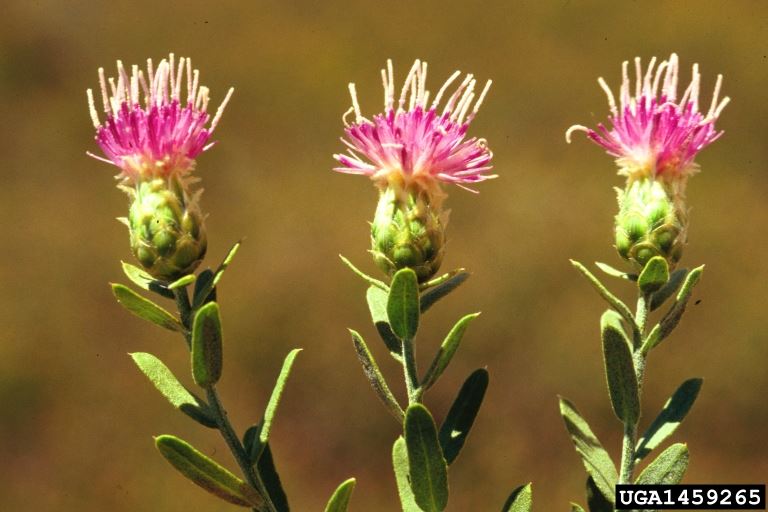
Russian knapweed: flowers
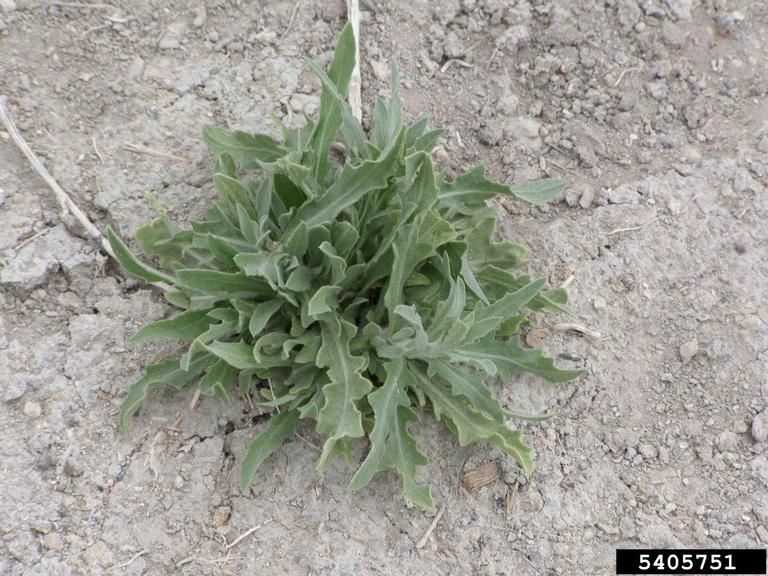
Russian knapweed: foliage
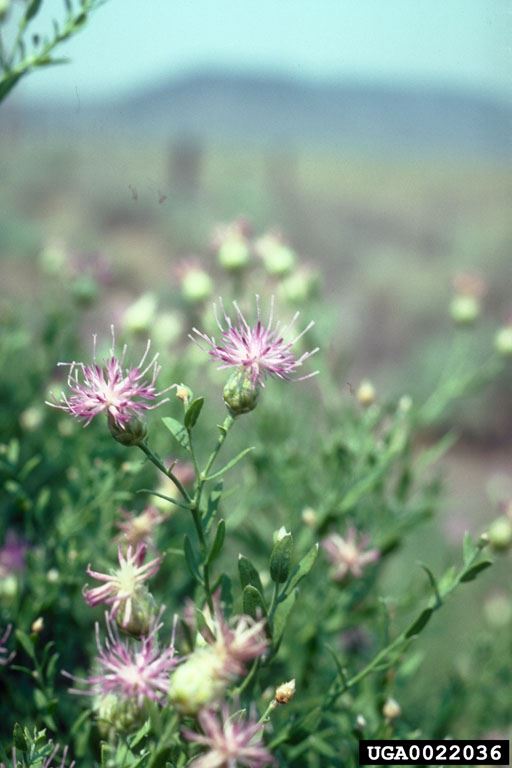
Russian knapweed: flowers and foliage
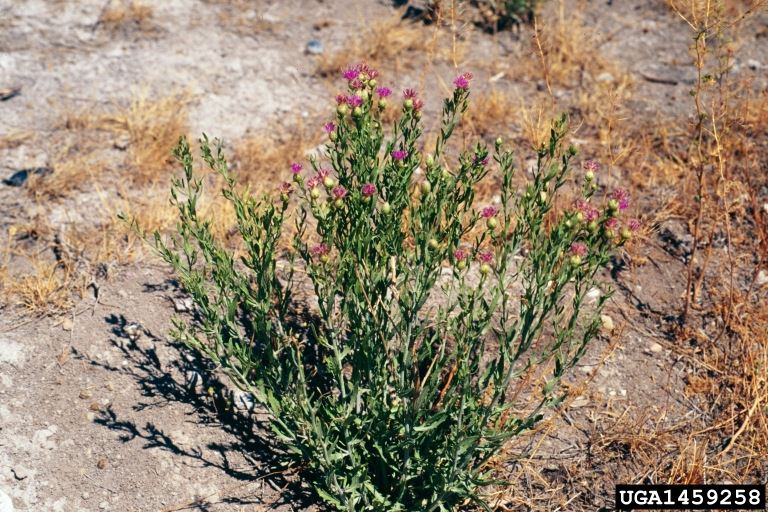
Russian knapweed
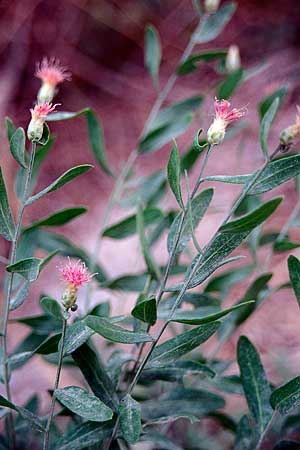
Russian knapweed: flowers and foliage
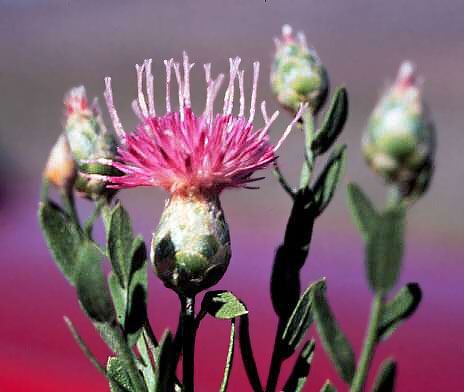
Russian knapweed: flower
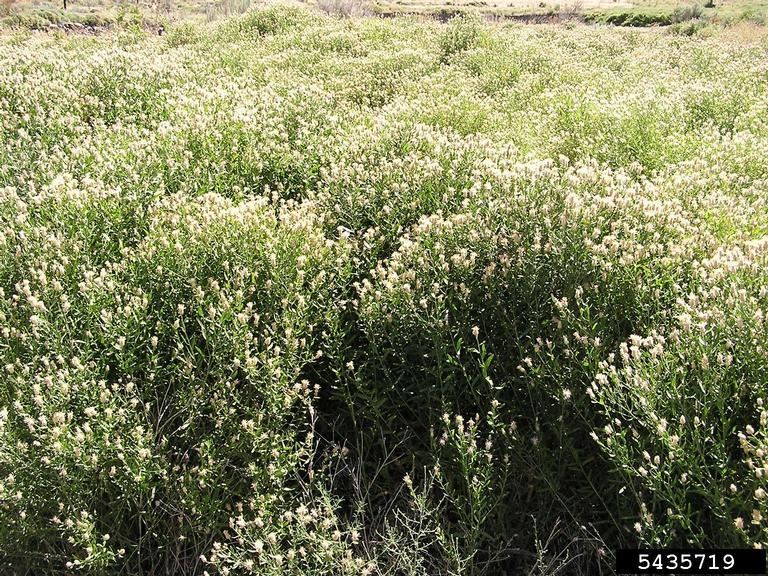
Russian knapweed: infestation
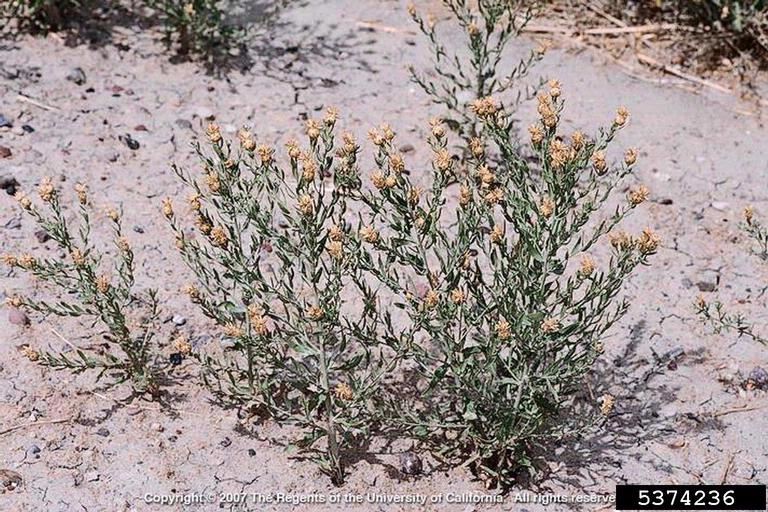
Russian knapweed: going to seed
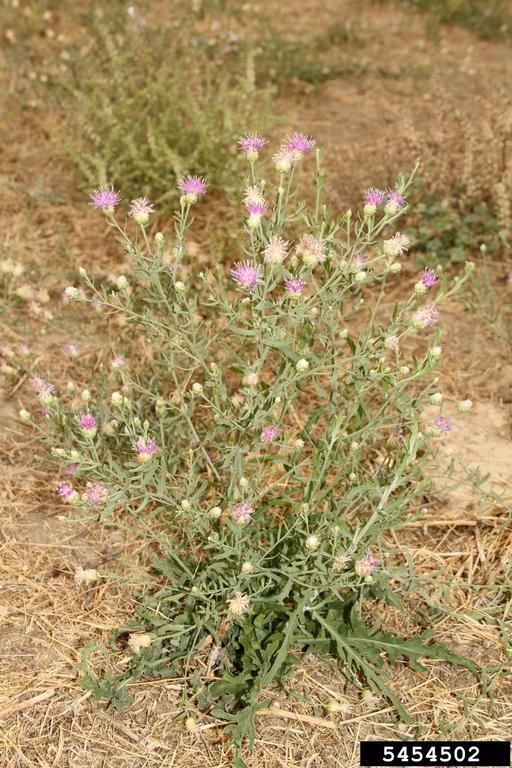
Russian knapweed
Resources
-
-
References
Beck, K.G. (2013, November). Russian knapweed – 3.111. Retrieved from http://extension.colostate.edu/topic-areas/natural-resources/russian-knapweed-3-111/
Duncan, C. (2018, April 6). Managing Russian knapweed (Acroptilon repens). Retrieved from https://www.techlinenews.com/articles/2006/12/31/managing-russian-knapweed-on-western-rangelands-with-milestone-herbicide
Lym, R. (2018, April). Know your knapweeds. Retrieved from https://www.ag.ndsu.edu/publications/crops/know-your-knapweeds
Oregon State University. (2008, September). Knapweeds: Centaurea spp., Acroptilon repens [PDF file]. Retrieved from https://catalog.extension.oregonstate.edu/sites/catalog/files/project/pdf/ec1596.pdf View PDF
Skelly, J. Russian knapweed control [PDF file]. Retrieved from https://www.unce.unr.edu/publications/files/ho/2005/fs0551.pdf View PDF
United States Department of Agriculture. (2015, February). Field guide for managing Russian knapweed in the Southwest [PDF file]. Retrieved from https://www.fs.usda.gov/Internet/FSE_DOCUMENTS/stelprdb5410125.pdf View PDF
University of California Statewide Integrated Pest Management Program. Russian knapweed (acroptilon repens). Retrieved from http://ipm.ucanr.edu/PMG/WEEDS/russian_knapweed.html
Wilson, L., & Randall, C. (2005, April). Biology and biological control of knapweed [PDF file]. Retrieved from https://bugwoodcloud.org/resource/files/6223.pdf View PDF




